EMI Filters for UPS
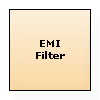 EMI stands for
“Electromagnetic Interference” and is also known as electrical noise. Thus, an EMI filter is
used for noise suppression and there is at least one EMI filter in all modern electronics. EMI
itself can be created within the wiring of a circuit or it can be radiated through the air
(referred to as “RFI.”) EMI shielding and filtering is required by government standards. EMI
noise interferes with a circuit’s ability to operate properly. This is especially true with
portable devices, since they are designed to save power, which typically means lower signal
voltages. With lower voltage, there is less head room for noise to ride without becoming an
unintended part of the signal. Devices with poor EMI prevention can interfere with air plane
flight frequencies, causing static in the same radio band that is used to by traffic control
towers to direct pilots landing and taking off. This is why all electronic devices are turned
off before take-off and landing.
EMI stands for
“Electromagnetic Interference” and is also known as electrical noise. Thus, an EMI filter is
used for noise suppression and there is at least one EMI filter in all modern electronics. EMI
itself can be created within the wiring of a circuit or it can be radiated through the air
(referred to as “RFI.”) EMI shielding and filtering is required by government standards. EMI
noise interferes with a circuit’s ability to operate properly. This is especially true with
portable devices, since they are designed to save power, which typically means lower signal
voltages. With lower voltage, there is less head room for noise to ride without becoming an
unintended part of the signal. Devices with poor EMI prevention can interfere with air plane
flight frequencies, causing static in the same radio band that is used to by traffic control
towers to direct pilots landing and taking off. This is why all electronic devices are turned
off before take-off and landing.
One of the biggest sources of EMI is in the generation of parasitic noise, which is created by
the circuit itself. Unintended capacitance facilitates the transfer of high frequency, random
noise into a circuit or other parts of a system. All AC/DC switch mode power supplies have EMI
filters that allow them to comply with standards. Design engineers from all industries report
that one of the more difficult tasks is achieving EMI safety compliance and that EMI is a
significant factor in new product development, even at the system level. At the system level, it
can be very difficult to find the source of the EMI noise and eradicate or prevent it.
Switch Mode Chargers for UPS
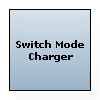 A switch
mode (SMBC) battery charger converts alternating current (AC) to Direct Current (DC). Switch
mode chargers are faster, smaller, lighter, and more efficient than equivalent linear battery
chargers. Designing a battery charger with switching converter topologies to charge battery
packs has considerations with regard to the required charge-current level, AC adapter voltage
level range, the expected ambient temperature range, and the desired converter switching
frequency. The buck converter topology is most often used for switch mode chargers in either
synchronous or non-synchronous modes.
A switch
mode (SMBC) battery charger converts alternating current (AC) to Direct Current (DC). Switch
mode chargers are faster, smaller, lighter, and more efficient than equivalent linear battery
chargers. Designing a battery charger with switching converter topologies to charge battery
packs has considerations with regard to the required charge-current level, AC adapter voltage
level range, the expected ambient temperature range, and the desired converter switching
frequency. The buck converter topology is most often used for switch mode chargers in either
synchronous or non-synchronous modes.
Switch-mode battery chargers can be quite sophisticated. They can be programmable and come with
multiple monitoring and safety features that are especially ideal for potentially dangerous
battery chemistries. Some features of SMBCs include efficient PWM control, highly accurate
charge current and voltage regulation, adapter current regulation, charge preconditioning,
charge status monitoring, output for LED indication, battery temperature sensing, sleep mode for
energy efficiency once the battery is fully charged, and more.
Switch-mode charging reduces power use over a wide range of voltages, but can require more PCB
board space and is more complicated than linear chargers. Linear chargers are small and the lack
of switching means there is less noise liable to be introduced into the surrounding circuitry.
However, linear chargers are less power efficient than switch-mode chargers. Pulse type chargers
are also small and efficient but require a current-limited AC adapter.
Analog-to-Digital Converters for UPS
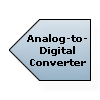 An Analog-to-Digital
Converter (ADC or A/D converter) measures the magnitude of an input analog signal and converts
it to a digital number that is proportional to the magnitude of the voltage or current. An ADC
often converts signals collected from the real-world to digital signals for processing. One of
the more important specifications of an ADC is the resolution that it offers – the more bits,
the higher the resolution. A higher resolution yields a more accurate approximation of the
analog input.
An Analog-to-Digital
Converter (ADC or A/D converter) measures the magnitude of an input analog signal and converts
it to a digital number that is proportional to the magnitude of the voltage or current. An ADC
often converts signals collected from the real-world to digital signals for processing. One of
the more important specifications of an ADC is the resolution that it offers – the more bits,
the higher the resolution. A higher resolution yields a more accurate approximation of the
analog input.
Temperature Sensors for UPS
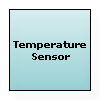 A temperature
sensor is a device that measures cold or heat as a temperature or temperature gradient. Many
applications require some implementation of temperature sensing and measurement. For motors, the
operating temperature inside the case is monitored by the processor and set to alarm or shut
down at temperatures higher than the normal operating temperature of the motor. If a motor runs
at too high of a temperature for too long, it can reduce the life of the motor. Operating
temperature is an indication of the general operating health of the motor. Higher temperatures
inside the motor case can mean too high of a load is placed on the motor, since as load
increases, motor current consumption increases to meet the load requirements.
A temperature
sensor is a device that measures cold or heat as a temperature or temperature gradient. Many
applications require some implementation of temperature sensing and measurement. For motors, the
operating temperature inside the case is monitored by the processor and set to alarm or shut
down at temperatures higher than the normal operating temperature of the motor. If a motor runs
at too high of a temperature for too long, it can reduce the life of the motor. Operating
temperature is an indication of the general operating health of the motor. Higher temperatures
inside the motor case can mean too high of a load is placed on the motor, since as load
increases, motor current consumption increases to meet the load requirements.
Rechargeable Batteries for UPS
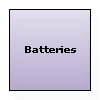 Batteries are a
portable, wireless means of storing energy via the use of self-contained chemical cells. They
can be for one-time use and discarded, or recharged and reused. In essence, a battery is an
energy storage device, but can only store and release electricity as direct current. Direct
current is a flat line at a given amplitude (until it declines as it is exhausted), versus
alternating current, which is a sinusoidal wave.
Batteries are a
portable, wireless means of storing energy via the use of self-contained chemical cells. They
can be for one-time use and discarded, or recharged and reused. In essence, a battery is an
energy storage device, but can only store and release electricity as direct current. Direct
current is a flat line at a given amplitude (until it declines as it is exhausted), versus
alternating current, which is a sinusoidal wave.
Processors for UPS
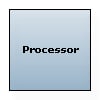 The term "processor"
refers to an electronic device that performs computational functions and carries out the
instructions of a stored program. Other terms for processor are microprocessor, central
processing unit, and digital signal processor. Essentially, the processor refers to "the brains
of a computer."
The term "processor"
refers to an electronic device that performs computational functions and carries out the
instructions of a stored program. Other terms for processor are microprocessor, central
processing unit, and digital signal processor. Essentially, the processor refers to "the brains
of a computer."
Drivers for UPS
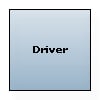 It is a common
misconception that most power MOSFETs or IGBTs can be driven directly from a logic circuit or
microcontroller. The reality is that most of these high-power transistors require current and
voltage levels that far exceed the capacity of control electronics. Essentially, a gate driver
is a power amplifier which serves as an interface between a low-power PWM signal and the gate of
an IGBT/MOSFET transistor.
It is a common
misconception that most power MOSFETs or IGBTs can be driven directly from a logic circuit or
microcontroller. The reality is that most of these high-power transistors require current and
voltage levels that far exceed the capacity of control electronics. Essentially, a gate driver
is a power amplifier which serves as an interface between a low-power PWM signal and the gate of
an IGBT/MOSFET transistor.
Displays for UPS
 The most common and
ubiquitous of display devices is the LCD. LCD means "liquid crystal display." It is an
electronically driven flat panel screen that orients liquid crystals within the panel in a
direction that blocks or transmits light coming from behind the panel. LCDs are a low cost,
energy efficient visual display that can be controlled in segments or as individual pixels, in
shades of black and gray or in full color. LCDs have most commonly replaced bulky cathode ray
tubes in televisions and computers and are available in all sizes. Liquid crystals were first
discovered in 1888, but were first put into common use in the early 1970s as electronic
digital-display watches.
The most common and
ubiquitous of display devices is the LCD. LCD means "liquid crystal display." It is an
electronically driven flat panel screen that orients liquid crystals within the panel in a
direction that blocks or transmits light coming from behind the panel. LCDs are a low cost,
energy efficient visual display that can be controlled in segments or as individual pixels, in
shades of black and gray or in full color. LCDs have most commonly replaced bulky cathode ray
tubes in televisions and computers and are available in all sizes. Liquid crystals were first
discovered in 1888, but were first put into common use in the early 1970s as electronic
digital-display watches.
USB Transceivers for UPS
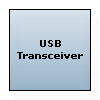 USB is a standard
connection interface between computers and digital devices. A USB transceiver is a physical
layer device that prepares data for transmission and then sends to, and receives data from,
another transceiver. The transceiver detects connection and provides the low level USB protocol
and signaling. The term "transceiver" indicates an implementation of both transmit and receive
functions. It transmits and receives, encodes and decodes data, provides error indication,
implements buffers to stage data until it can be managed, and adjusts for the clock rate from
the serial stream on the USB SuperSpeed bus to match that of the “link layer” higher up on the
communication stack.
USB is a standard
connection interface between computers and digital devices. A USB transceiver is a physical
layer device that prepares data for transmission and then sends to, and receives data from,
another transceiver. The transceiver detects connection and provides the low level USB protocol
and signaling. The term "transceiver" indicates an implementation of both transmit and receive
functions. It transmits and receives, encodes and decodes data, provides error indication,
implements buffers to stage data until it can be managed, and adjusts for the clock rate from
the serial stream on the USB SuperSpeed bus to match that of the “link layer” higher up on the
communication stack.
DPDT Relay for UPS
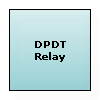 Simply put, a relay
is a switch that is controlled electrically. Relays are often necessary to control high
power/current/voltage circuits with a low-power signal while maintaining complete electrical
isolation between them.
Simply put, a relay
is a switch that is controlled electrically. Relays are often necessary to control high
power/current/voltage circuits with a low-power signal while maintaining complete electrical
isolation between them.
Many relays are electromechanical in nature; the control signal energizes an electromagnetic coil
creating a magnetic field. This field exerts a force on a movable armature of ferromagnetic
material (such as iron) which makes or breaks the electrical connection.
Solid State Relays (SSRs) are another common type, and unlike their electromechanical equivalent,
they have no moving parts. Instead, one or more transistors, such as a MOSFET, are used to
provide a similar function. Electrical isolation must be added in this case, often by using an
on-chip optocoupler.
The term “DPDT” stands for “double-pole, double throw” and is equivalent to two changeover
switches controlled by the same actuator or input signal.
Displays for UPS
 LCD means "liquid
crystal display." It is an electronically driven flat panel screen that orients liquid crystals
within the panel in a direction that blocks or transmits light coming from behind the panel.
LCDs are a low cost, energy efficient visual display that can be controlled in segments or as
individual pixels, in shades of black and gray or in full color. LCDs have most commonly
replaced bulky cathode ray tubes in televisions and computers and are available in all sizes.
Liquid crystals were first discovered in 1888, but were first put into common use in the early
1970s as electronic digital-display watches.
LCD means "liquid
crystal display." It is an electronically driven flat panel screen that orients liquid crystals
within the panel in a direction that blocks or transmits light coming from behind the panel.
LCDs are a low cost, energy efficient visual display that can be controlled in segments or as
individual pixels, in shades of black and gray or in full color. LCDs have most commonly
replaced bulky cathode ray tubes in televisions and computers and are available in all sizes.
Liquid crystals were first discovered in 1888, but were first put into common use in the early
1970s as electronic digital-display watches.
High Speed Optocouplers for UPS
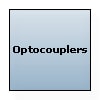 An optocoupler is a
device used to provide electrical isolation. Isolation is critical for protecting both an
electronics system and the user from potentially hazardous voltages. An optocoupler consists of
at least two functional parts: an LED to translate the electrical input signal into light waves,
and a photodetector, such as a phototransistor or photodiode, to convert the optical signal back
to an electrical output. There is no conductive path through the device, so the output is
considered opto-isolated from the input.
An optocoupler is a
device used to provide electrical isolation. Isolation is critical for protecting both an
electronics system and the user from potentially hazardous voltages. An optocoupler consists of
at least two functional parts: an LED to translate the electrical input signal into light waves,
and a photodetector, such as a phototransistor or photodiode, to convert the optical signal back
to an electrical output. There is no conductive path through the device, so the output is
considered opto-isolated from the input.
USB Receptacles for UPS
 USB plugs and
receptacles are designed to reduce human error by their unique shape; they fit together in only
one way. USB plugs and receptacles are Type A (connecting to hosts or hubs) or Type B
(connecting to devices) and are available 3 sizes: standard, mini, and micro. Type A plugs
always face upstream, Type B faces downstream. USB is used in many applications covering all
areas of electronics that require communication, but more commonly with devices that need fast
or easy connections for interaction with computers. Since USB provides a small charging current
as well, it is becoming a de facto standard for charging portable devices.
USB plugs and
receptacles are designed to reduce human error by their unique shape; they fit together in only
one way. USB plugs and receptacles are Type A (connecting to hosts or hubs) or Type B
(connecting to devices) and are available 3 sizes: standard, mini, and micro. Type A plugs
always face upstream, Type B faces downstream. USB is used in many applications covering all
areas of electronics that require communication, but more commonly with devices that need fast
or easy connections for interaction with computers. Since USB provides a small charging current
as well, it is becoming a de facto standard for charging portable devices.
DC/DC Converters for UPS
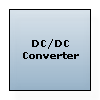 DC/DC regulators
are circuits that convert DC voltage from one level to another and maintain that voltage at a
constant level. Electronic systems often have several sub-circuits, each with its own voltage
level requirement that may be higher or lower than the main power supply. Step-up (boost)
converters raise a voltage to a higher level, while step-down (buck) converters lower it. Some
DC/DC converter types can raise or lower voltage, such as "buck-boost" converters. DC/DC
converters may offer options such as multiple softstart levels, undervoltage lockout, protection
against overvoltage and undervoltage, and programmable short-circuit protection. All of these
devices are considered to be in the same category of integrated chips, typically categorized as
power management devices.
DC/DC regulators
are circuits that convert DC voltage from one level to another and maintain that voltage at a
constant level. Electronic systems often have several sub-circuits, each with its own voltage
level requirement that may be higher or lower than the main power supply. Step-up (boost)
converters raise a voltage to a higher level, while step-down (buck) converters lower it. Some
DC/DC converter types can raise or lower voltage, such as "buck-boost" converters. DC/DC
converters may offer options such as multiple softstart levels, undervoltage lockout, protection
against overvoltage and undervoltage, and programmable short-circuit protection. All of these
devices are considered to be in the same category of integrated chips, typically categorized as
power management devices.